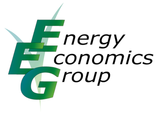Invert-EE/Lab
Invert/EE-Lab model is a bottom-up model to analyse space heating, hot water generation and space cooling in the building stock. It is designed to quantitatively evaluate the effects of different framework conditions on total energy demand, energy carrier and technology mix, CO2 emissions and costs. Such framework conditions include price scenarios for energy carriers, cost scenarios for technologies and efficiency measures, different settings of economic and regulatory incentives, consumer behaviour, climate change and resource potential restrictions. Invert is based on a highly disaggregated description of the building stocks in the different analysis regions. This includes the type of a building, age, state of renovation, existing heating systems, user structure as well as regional aspects such as availability of energy infrastructure for gas or district heating. In the analyses usually, both residential and tertiary buildings, are covered. Furthermore, different structures of housing provisions and household-income classes are represented in the model. The model uses an extended database of technologies and efficiency measures containing their technical and economic characteristics. On the one hand this integrates currently applied and potential future technologies for the supply of space heating, hot water and space cooling, including on-site solar thermal and PV generation as well as the heat distribution systems in the building. On the other hand a large set of options for building shell refurbishment and heat recovery systems is considered for decreasing energy needs in the buildings.
Invert is based on a highly disaggregated description of the building stocks in the different analysis regions. This includes the type of a building, age, state of renovation, existing heating systems, user structure as well as regional aspects such as availability of energy infrastructure for gas or district heating. In the analyses usually, both residential and tertiary buildings, are covered. Furthermore, different structures of housing provisions and household-income classes are represented in the model.
The model uses an extended database of technologies and efficiency measures containing their technical and economic characteristics. On the one hand this integrates currently applied and potential future technologies for the supply of space heating, hot water and space cooling, including on-site solar thermal and PV generation as well as the heat distribution systems in the building. On the other hand a large set of options for building shell refurbishment and heat recovery systems is considered for decreasing energy needs in the buildings.
The following figure shows the structure of Invert when applying the EE-Lab version of the tool.

Basic simulation approach of the Invert/EE-LabInvert-EE/Lab
Invert/EE-Lab simulates energy-related investment decisions in the building stocks and is particularly used for studying the effects of economic and regulatory incentives on the decisions of different agents (i.e. owner types) in case an investment decision is due for a specific building segment. It hereby takes into account the inhomogeneous structure of decision-makers in the building sector. The core of the EE-Lab version is a myopic, multinomial logit approach, which optimizes the objectives of agents under imperfect information conditions and by that represents the decision makers. It applies a nested logit approach to calculate market shares of heating systems and energy efficiency measures depending on building and investor type. The following equation depicts the market share calculation as logit-model. A detailed representation of the decision algorithm is given by Müller (2015) and Steinbach (2016).
The model enables the definition of different owner types as instances of predefined investor classes: owner occupier, private landlords, community of owners (joint-ownership), and housing association. The structure is motivated by the different perspectives regarding building-related investments. For instance, energy cost savings are only relevant for those owners who occupy the building. The corresponding variable relevant to landlords is a refinancing of energy savings measures through additional rental income (investor-tenant dilemma).
Owner types are differentiated by their investment decision behaviour and the perception of the environment, the former is captured by investor-specific weights of economic and non-economic attributes of alternatives. The perception-relevant variables – environmental awareness, energy price expectations, or risk aversion – influence the attribute values.
In TransFair-AT, the Invert/EE-Lab model is linked to the DYNK model and MARS, a car fleet stock-flow model.
More information about the Invert model family and contact to the development and consulting team can be found here.
References
Müller, A. (2015). Energy Demand Assessment for Space Conditioning and Domestic Hot Water: A Case Study for the Austrian Building Stock (PhD-Thesis). Technische Universität Wien.
Steinbach, J. (2016). Modellbasierte Untersuchung von Politikinstrumenten zur Förderung erneuerbarer Energien und Energieeffizienz im Gebäudebereich. Fraunhofer Verlag. ISBN 978-3-8396-0987-3






